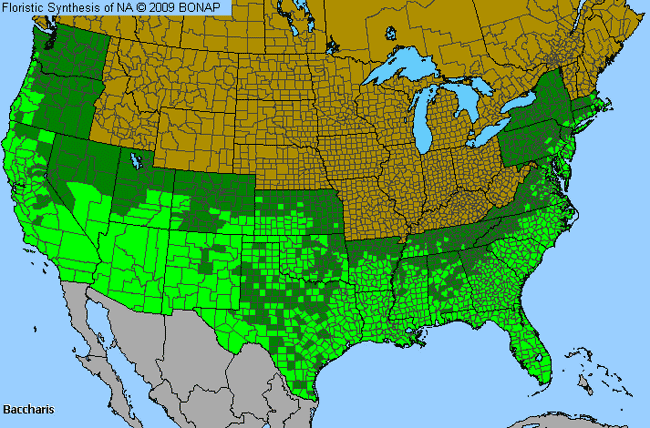False Willow (Baccharis)

False Willow Genus Details

These shrubs, and sometimes small trees, grow to be 2-3 feet tall, with yellowish flowers. The leaves are narrow. They tend to grow in brackish marshes, in ditches and roadsides, wooded areas, or old fields.
False Willow Allergy Info

Since this genus is within the same tribe as ragweed, and plants are both insect- as well as wind-pollinated, allergenicity is a potential concern.
False Willow Pollen Description

Baccharis pollen grains are oblate-spheroidal to prolate-spheroidal; the amb triangular, 3-4 lobate and 3-4 colporate. The sexine is generally thick, tectate, and has long spines. The intine is thin but slightly thickened below the apertures.
The grains are typically 20-30 micrometers in diameter.
Species in This Genus

Allergenicity Legend:
 Mild Allergen |
Mild Allergen |
 Moderate Allergen |
Moderate Allergen |
 Severe Allergen |
Severe Allergen |
 Allergy Test Available
Allergy Test Available
False Willow (Baccharis) is a genus of the ASTERACEAE family.
This genus includes the following allergenic species:
This genus includes the following allergenic species:















